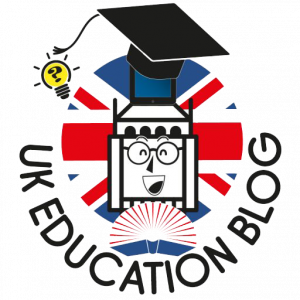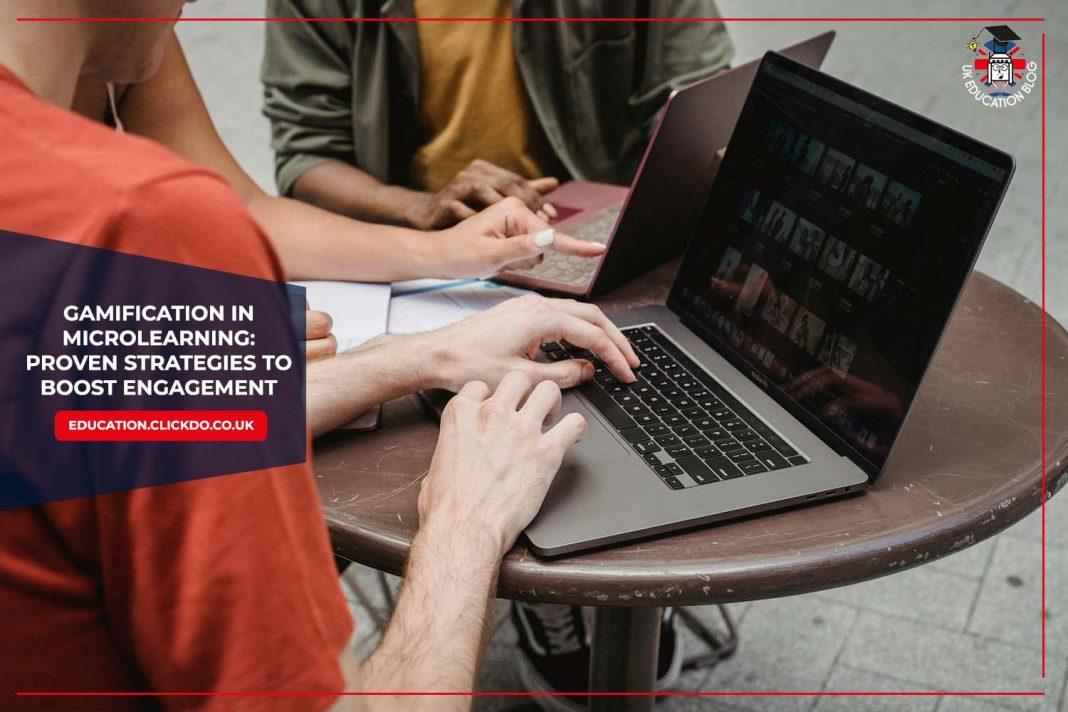Microlearning gamification combines the delivery of small, digestible learning segments with game mechanics to boost engagement, motivation, and knowledge retention.
This article explores top strategies for implementing this innovative approach in training programs, focusing on how it enhances learner engagement, improves knowledge retention, and offers real-time feedback.
Leading apps like the Headway book summary app utilize the gamification approach and reap fantastic results, which we will mention later so that you can learn from them as well. Learn how to effectively incorporate gamified microlearning in various industries and avoid common pitfalls.
Key takeaways
- Combining microlearning with gamification enhances learner engagement and knowledge retention through interactive and enjoyable experiences.
- Key elements of effective gamified microlearning include game mechanics, storytelling, and instant feedback, which create memorable learning experiences.
- Emerging trends like AI, mobile-first design, and social learning are reshaping gamified microlearning, making it more personalized and accessible.
The Power of Combining Microlearning and Gamification

Combining microlearning and gamification creates a powerful tool for enhancing learner engagement, motivation, and knowledge retention.
Microlearning, which involves delivering content in small, easily digestible chunks, is already a highly effective educational method. When gamified, it incorporates game mechanics such as points, badges, and leaderboards, making learning interactive and enjoyable.
This integration meets various corporate employee training needs, driving organizational change and improving training outcomes across industries.
Enhanced learner engagement
Gamified microlearning significantly enhances learner engagement by transforming training sessions into interactive and enjoyable experiences. Incorporating game-like elements in sales training can dramatically enhance engagement, knowledge retention, and performance among sales teams. Utilizing points, badges, levels, and leaderboards, microlearning modules foster a competitive environment that enhances engagement and motivation.
Additionally, quest-based learning modules for compliance training make the learning process more engaging and memorable for employees. These quests transform mandatory training into interactive experiences, making it easier for employees to grasp complex regulations and stay engaged for longer periods.
Improved knowledge retention
Active learning through gamified microlearning fosters better retention by encouraging learners to participate actively rather than passively consume information. This method is particularly effective when combined with AI technologies that personalize learning experiences, adapting content to individual performance and needs. Such personalized approaches ensure that learners are constantly engaged, leading to long-term knowledge retention and improved training outcomes.
The immediate feedback and adaptability provided by gamified microlearning also play a crucial role in enhancing knowledge retention. Breaking content into digestible chunks and delivering it through interactive formats increases the likelihood of long-term information retention.
Real-time feedback and adaptability
Real-time feedback is a cornerstone of effective gamified microlearning. Instant responses help learners assess their understanding and make necessary adjustments, fostering continuous improvement. This feedback loop enhances the learning experience by providing clarity on performance and encouraging learners to reflect on their progress.
Moreover, AI technologies enable real-time analysis of user performance, allowing for immediate adjustments in content and challenges based on progress. This adaptability ensures that the learning experience is tailored to meet individual needs, maximizing learning outcomes and keeping learners engaged.
3 Key Elements of Gamified Microlearning
Effective gamified microlearning hinges on several key elements: game mechanics, storytelling, and instant feedback. These components work together to create interactive, engaging, and memorable learning experiences that drive learner engagement and knowledge retention.
1. Game mechanics
Game mechanics are fundamental to gamified microlearning. They involve incorporating elements like:
- points
- rewards
- challenges
- competition
into the learning process. Earning badges or points for tasks can significantly motivate learners and acknowledge their progress, enhancing the learning experience.
However, it’s essential to strike a balance. Overloading a microlearning program with too many game elements can detract from the educational content and overwhelm learners. Therefore, effective gamified microlearning should carefully incorporate game mechanics to boost engagement without distracting from the core objectives.
2. Storytelling
Storytelling plays a critical role in gamified microlearning by making the content engaging and relatable. Integrating narratives into learning modules helps create emotional connections with the content, making it more memorable and impactful for learners.
This method enhances knowledge retention and keeps learners motivated and interested.
3. Instant feedback
Instant feedback mechanisms are crucial for creating a real-time performance loop in gamified microlearning. Providing rapid feedback helps learners identify their strengths and weaknesses, fostering continuous improvement and keeping them engaged.
This dynamic learning atmosphere is far more engaging than traditional training methods, driving better learning outcomes.
Industry-specific Applications of gamified Microlearning

Gamified microlearning can be tailored to meet the specific needs of various industries, from sales training to compliance and leadership development. These applications enhance learner engagement, improve training outcomes, and reduce costs.
Sales training simulations
Sales training can greatly benefit from gamified scenarios and simulations. These methods replicate real-life challenges, allowing sales teams to practice and hone their skills in a safe environment.
Simulations help sales teams improve preparedness and response, enhancing performance and training outcomes.
Compliance quests
Compliance training is essential for ensuring employees are aware of laws, regulations, and company policies. Quest-based learning transforms traditional compliance training into engaging modules that motivate learners through challenges and accomplishments.
These interactive simulations increase knowledge retention and ensure real-world application of skills.
Leadership development challenges
Leadership development is crucial for guiding teams and making strategic decisions. Gamified microlearning enhances leadership training by making the learning process more engaging and interactive. Techniques such as points, badges, and leaderboards foster competition and motivation among leaders, helping them improve their skills more effectively.
3 Practical Tips for Implementing Gamified Microlearning
Implementing gamified microlearning requires careful planning and execution. Key steps include defining clear learning objectives, using leaderboards and quizzes, and incorporating reward systems to motivate learners and boost engagement.
1. Define clear learning objectives
Clear learning objectives are fundamental to ensuring that each microlearning module targets specific and relevant outcomes. Establishing clear objectives helps learners focus on material supporting their goals, resulting in more effective training and better outcomes.
2. Use leaderboards and quizzes
Leaderboards and quizzes are powerful tools for boosting learner engagement and can also help to boost learner engagement. Leaderboards create a competitive environment that motivates learners to improve their performance and engage more deeply with the content.
Quizzes, on the other hand, provide immediate feedback and reinforce learning objectives, helping learners stay on track and achieve their goals.
3. Reward systems
Incorporating points, badges, and levels within a microlearning app creates a reward system that acknowledges learners’ achievements, enhancing their motivation and sense of progress. These rewards can stimulate dopamine release in the brain, reinforcing positive feelings and promoting long-term knowledge retention.
Real-world competition is also fostered through gamified elements like leaderboards, which publicly showcase achievements and drive a continual desire for improvement among learners. Certificates of achievement can further enhance motivation by recognizing and rewarding learners for mastering specific skills.
Common 3 Pitfalls to avoid in gamified Microlearning

While gamified microlearning offers numerous benefits, there are common pitfalls to avoid. These include over-gamification, lack of clear objectives, and ignoring learner feedback. Addressing these issues is crucial for creating effective and engaging training programs.
1. Over-gamification
Over-gamification, or the excessive use of game elements, can cause confusion and dilute the educational content. This overload can impair clarity and lead to disengagement as learners struggle to focus on the core learning objectives.
Striking a balance in gamification is crucial to maintain engagement without overwhelming learners.
2. Lack of clear objectives
Unclear learning outcomes can lead to learner skepticism and hinder the effectiveness of gamified training. Without well-defined goals, learners may struggle to understand what they should achieve, resulting in feelings of confusion and disengagement.
Establishing clear learning goals is essential to ensure learners are motivated and understand the purpose of their training.
3. Ignoring learner feedback
Gathering regular feedback from learners is vital to ensure the relevance and effectiveness of gamified microlearning experiences. Feedback helps identify areas for improvement and adapt content to meet learners’ needs better.
Applying these insights can greatly improve the training program and learner satisfaction.
Emerging Trends in Gamified Microlearning
Emerging trends like AI, mobile-first design, and social learning are reshaping the landscape of gamified microlearning. These advancements improve engagement and create more personalized and efficient learning experiences.
1. Artificial intelligence and adaptive learning
AI can tailor the learning experience by analyzing individual learner behavior and preferences, ensuring that educational content meets their specific needs. Machine learning algorithms enable AI to dynamically adjust content difficulty based on learner performance, fostering continuous improvement.
This adaptive learning approach encourages learners to progress at their own pace, leading to better understanding and retention of information.
Integrating AI in gamified microlearning creates an engaging learning environment that keeps learners motivated and enhances the overall effectiveness of the training program.
2. Mobile-first design
Designing for mobile devices is crucial as it allows learners to access gamified microlearning content anytime and anywhere. Mobile-first eLearning, designed specifically for mobile environments, ensures optimal usability and engagement on smartphones and tablets.
As mobile learning is predicted to become the preferred method for microlearning by 2025, focusing on concise, self-contained content that fits into learners’ limited spare time is essential.
3. Social learning and collaboration
Social learning leverages human interaction principles, allowing learners to share knowledge and resources with peers and experts, thus enhancing the learning experience. The rise of social media reflects the inherent need for individuals to connect and exchange information, which can be effectively translated into collaborative learning environments. Tools like discussion forums, group projects, and peer reviews enhance productivity and efficiency in learning through digital platforms.
User-generated content thrives within Learning Management Systems (LMS), where it can be shared and discussed among users, fostering a culture of continuous learning and improvement. Social learning is cost-effective and facilitates learning across varied settings, from casual discussions to structured sessions, making it a powerful trend in gamified microlearning.
Summary
In summary, the combination of microlearning and gamification offers a robust approach to modern corporate training, enhancing learner engagement, motivation, and knowledge retention. By leveraging key elements like game mechanics, storytelling, and instant feedback and tailoring applications to specific industry needs, organizations can create effective and engaging training programs. Practical tips for implementation and awareness of common pitfalls ensure the success of these programs. As emerging trends like AI, mobile-first design, and social learning continue to evolve, the future of gamified microlearning looks promising and transformative. Embrace these strategies to revolutionize your training processes and achieve remarkable outcomes.
Frequently Asked Questions
1. What is microlearning, and how does it differ from traditional learning methods?
Microlearning is a training approach that breaks down information into small, easily digestible segments, making it more effective for quick absorption and application in fast-paced environments, unlike traditional methods that often involve lengthy sessions.
2. How does gamification enhance microlearning?
Gamification enhances microlearning by making it more interactive and enjoyable through the use of game design elements like points, badges, and leaderboards, which significantly increase learner engagement and motivation.
3. What industries can benefit from gamified microlearning?
Gamified microlearning can greatly benefit industries in areas such as sales, compliance, and leadership development by increasing engagement, improving training outcomes, and reducing costs. This approach encourages a more interactive and effective learning experience.
4. What are some common pitfalls to avoid in gamified microlearning?
To ensure the effectiveness of gamified microlearning, avoid over-gamification, establish clear objectives, and prioritize learner feedback. These pitfalls can significantly hinder the learning experience.
5. What emerging trends should I be aware of in gamified microlearning?
You should be aware of the integration of AI for adaptive learning, a mobile-first design for enhanced accessibility, and social learning to promote collaborative engagement in gamified microlearning. These trends can significantly enhance the learning experience and effectiveness.
Author Profile

- Shirley Owen is a blogger and writer who enjoys writing blogs on education, technology and general news. An avid reader, she follows all the latest news & developments to report on them through her articles.
Latest entries
 careerDecember 30, 2025Why BIM Mastery has become essential for Construction Professionals in 2025
careerDecember 30, 2025Why BIM Mastery has become essential for Construction Professionals in 2025 learningDecember 22, 2025When Co-parenting Affects School Performance – Challenges & Solutions
learningDecember 22, 2025When Co-parenting Affects School Performance – Challenges & Solutions educationDecember 11, 2025Making Education Accessible for Mobile Families that Travel
educationDecember 11, 2025Making Education Accessible for Mobile Families that Travel learningOctober 28, 20257 Daily Classroom Strategies Helping Children With Learning Differences Thrive
learningOctober 28, 20257 Daily Classroom Strategies Helping Children With Learning Differences Thrive







